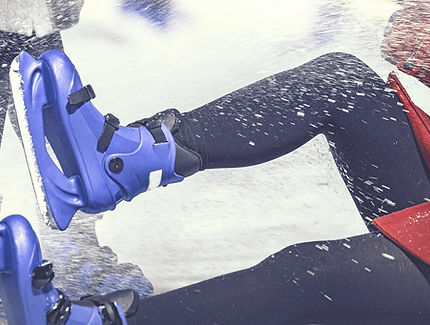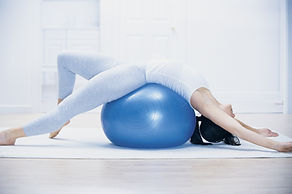
Pilates for Roller Blading
Why Pilates for roller blading?
If you are an athlete, either professional or recreational, you are probably always striving to improve your personal best at the sport.
You may be wondering: can Pilates exercise help me to improve my athletic performance? The answer is, most definitely, yes!
The answer lies in the inherent nature of Pilates exercise. First and foremost, Pilates works on developing your body awareness so that you are always working out in optimal postural alignment.
Standing in good alignment is challenging, but maintaining good alignment while you move is even more difficult.
However, no matter what kind of athlete you are, you can simultaneously increase your power and minimize your risk of injury with Pilates training.
Pilates also works to balance the body and develop muscular symmetry. If you play a racquet sport such as tennis or golf, or even if you are a recreational bowler, you probably have developed muscle imbalances due to the one-sided nature of your sport.
You can work to release the overworked tight muscles, and strengthen the weaker ones with asymmetrical exercise.
Again, balancing the body will help to prevent injuries that might otherwise occur when stress is placed on an unstable structure.
If you are a swimmer, you may be strong in the water, but you’ll need to develop more core or abdominal strength, as swimming doesn’t work this part of the body.
Many swimming movements can be mimicked on the Pilates apparatus, but they feel different on land, and performed against the resistance of springs rather than in the water.
Unlike weight training which can be very useful for gaining strength in individual muscle groups, Pilates movements are generally more complex and therefore recruit a higher number of muscle groups within each exercise.
Pilates exercises also require a greater range of joint motion, and therefore work to stretch as well as strengthen muscles.
Who couldn’t benefit from a greater range of motion, especially as we age?
Pilates has an aesthetic component. A good Pilates teacher is always coaching the students to concentrate on performing each and every exercise with fluidity, control, and grace.
This aesthetic component is more important for some sports — such as ice-skating, roller-blading, basketball, or gymnastics — than others.
However, it is important to remember that a fluid, concise movement requires far less energy expenditure than a jerky, stilted one.
And with less energy spent on extraneous movements, the more energy you will have left in reserve to pursue your favourite pastime!
For further information, please do not hesitate in contact us.
info@connecthealthandfitness.com



